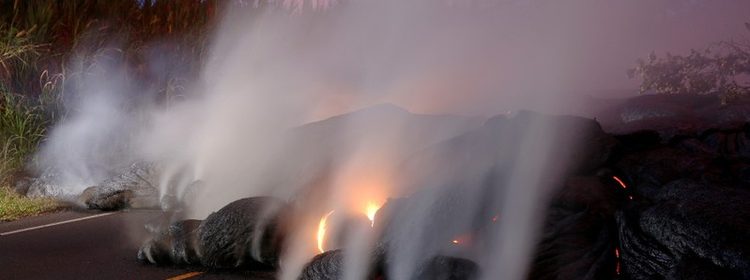Environmental Impact of Kilauea’s Volcanic Gas

Kīlauea is a currently active shield volcano in the Hawaiian Islands, and the most active of the five volcanoes that together form the island of Hawaiʻi. Located along the southern shore of the island, the volcano is between 300,000 and 600,000 years old and emerged above sea level about 100,000 years ago.
The immediate effects of a volcanic eruption is its destruction of plant and wildlife. Lava flows, pyroclastic flows, and the release of toxic sulfur dioxide can contribute to the famine and eventual loss of livestock and other animals.
While scientists are still collecting data on how wildlife has been affected on the Hawaiian island where the Kilauea volcano sits, looking at the damage from previous volcanic eruptions offers a grim example of what the final results of their investigation will be. In the case of Mount St. Helen’s eruption in 1980, the Washington Department of Game estimated that 11,000 hares, 6,000 deer, 5,200 elk, 1,400 coyotes, 300 bobcats, 200 black bears, and 15 mountain lions died from the rock-spewing pyroclastic flows from the eruption. Considering Kilauea sits on a relatively small island, it’s eruption has the possibility to redirect an entire ecosystem.
Obviously, the volcanic eruption’s long-term effects on climate change will be unavoidable. Kilauea’s eruption spewed hydrogen chloride, sulfur dioxide, ash, and other materials high into the stratosphere for several weeks. The carbon dioxide that Kilauea released will definitely augment the effects of climate change, as it caused chemical reactions that produced chlorine monoxide, a substance that destroys the Earth’s ozone layer.
After Kilauea’s eruption, lava continued to flow from multiple points along the northeast end of the active fissures for several weeks. Residents dealt with its damaging effects, and due to the elevated sulfur dioxide levels, the County of Hawaii had closed schools in the area the wind may carried the ash plume as far north as Kau, Kea’au, and Hilo.
Beginning in May, 2018, the lava lake that existed inside Halema‘uma‘u crater disappeared and lava flows from Puʻu ʻŌʻō crater have ceased. There is no molten lava or lava glow to see anywhere in or out of the park. Kilauea’s explosive eruption was devastating to both residents and wildlife alike. Local and federal sources say they will continue to monitor the volcanic activity for its latest effects on the local environment.

 Print
Print